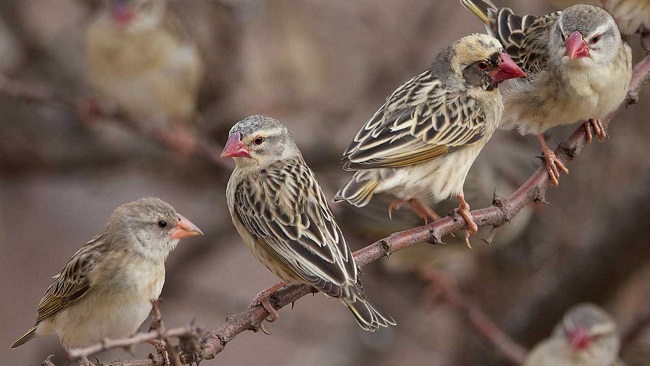Slowly, steadily and almost imperceptibly, North America’s bird population is dwindling.

The sparrows and finches that visit backyard feeders number fewer each year. The flutelike song of the western meadowlark – the official bird of six U.S. states – is growing rarer. The continent has lost nearly three billion birds representing hundreds of species over the past five decades, in an enormous loss that signals an “overlooked biodiversity crisis,” according to a study from top ornithologists and government agencies.
This is not an extinction crisis – yet. It is a more insidious decline in abundance as humans dramatically alter the landscape: There are 29 percent fewer birds in the United States and Canada today than in 1970, the study concludes. Grassland species have been hardest hit, probably because of agricultural intensification that has engulfed habitats and spread pesticides that kill the insects many birds eat. But the victims include warblers, thrushes, swallows and other familiar birds.
“That’s really what was so staggering about this,” said lead author Ken Rosenberg, a senior scientist at the Cornell Lab of Ornithology and American Bird Conservancy. “The generalist, adaptable, so-called common species were not compensating for the losses, and in fact they were experiencing losses themselves. This major loss was pervasive across all the bird groups.”
The study’s authors, who include scientists from Canada’s environment agency and the U.S. Geological Survey, were able to put a number on the decline because birds are probably the best-monitored animals on Earth. Decades of standardized, on-the-ground tallies carried out by ordinary bird enthusiasts – including the annual North American Breeding Bird Survey and the Christmas Bird Count – provided a wealth of data that the researchers compiled and compared.
They then cross-referenced that with data from a very different, nonhuman source: 143 weather radars that are designed to detect rain but also capture “biomass” flying through the skies, as hundreds of migratory bird species do every fall and spring. Birds look “sort of like big blobs” in radar imagery, said co-author Adriaan Dokter, a migration ecologist at the Cornell Lab. Measurements of the blobs’ size and movements showed that the volume of spring migration dropped 14 percent in the past decade, according to the study, published on Thursday, September 19, 2019 in Science.
Earlier research has documented several threats that could be responsible for the large-scale bird decline. Agriculture and habitat loss are thought to be the primary drivers, with other factors such as light pollution (which disorients birds), buildings (which they crash into) and roaming cats (which kill them) amounting to “death by a thousand cuts,” Rosenberg said.
Birds, because they are so well-monitored, should be viewed as canaries in coal mines, the authors argue – harbingers of a wider environmental malaise at a time when other creatures, including insects, are also thought to be fading but are more challenging to count.
“Studies like this do suggest the potential of a systems collapse,” said Richard Gregory, head of monitoring conservation science at the Royal Society for the Protection of Birds and a professor at University College London. “These birds are an indicator of ecosystem health. And that, ultimately, may be linked to the productivity and sustainability of agricultural systems.”
By Karin Brulliard, The Washington Post
